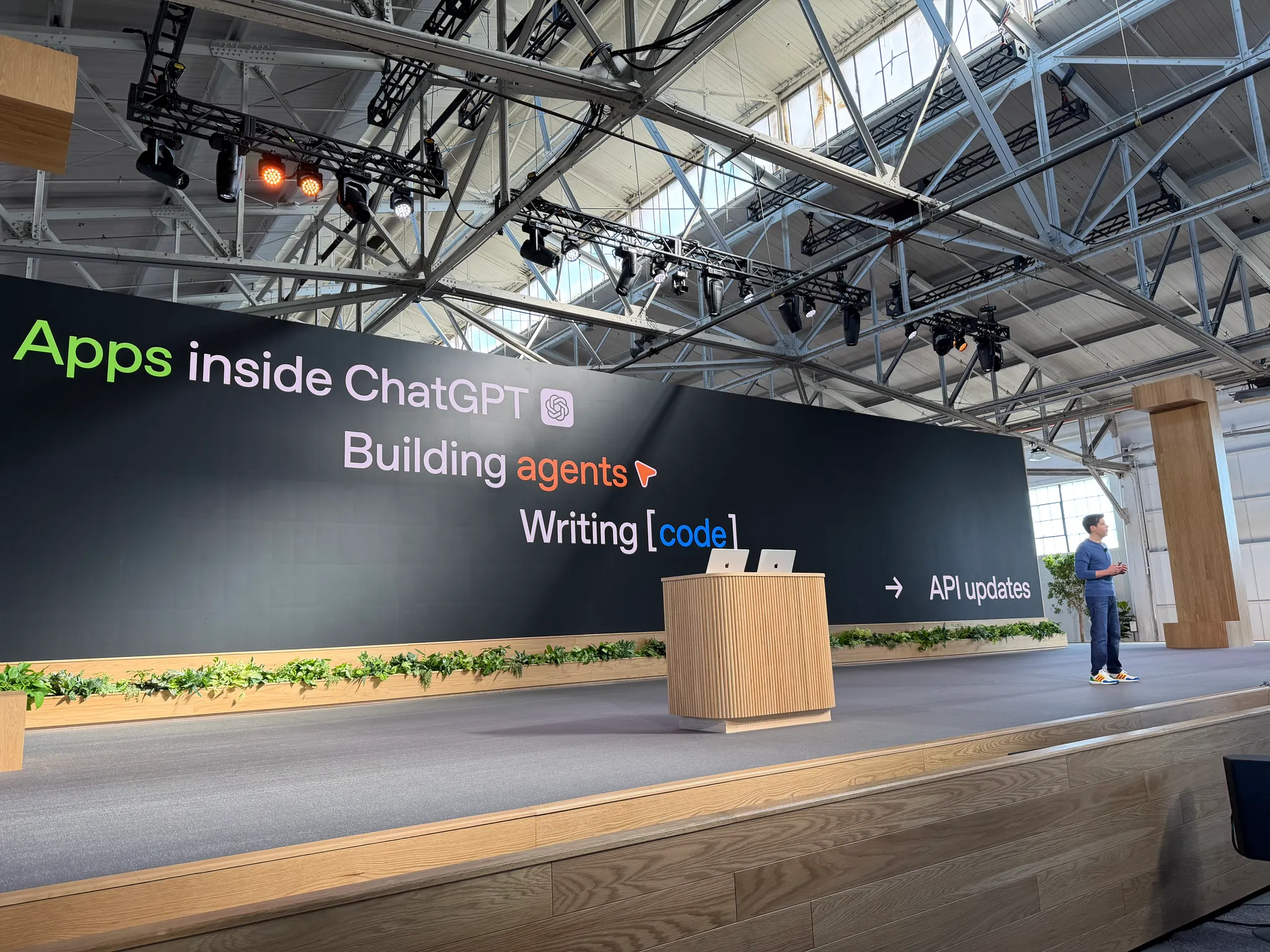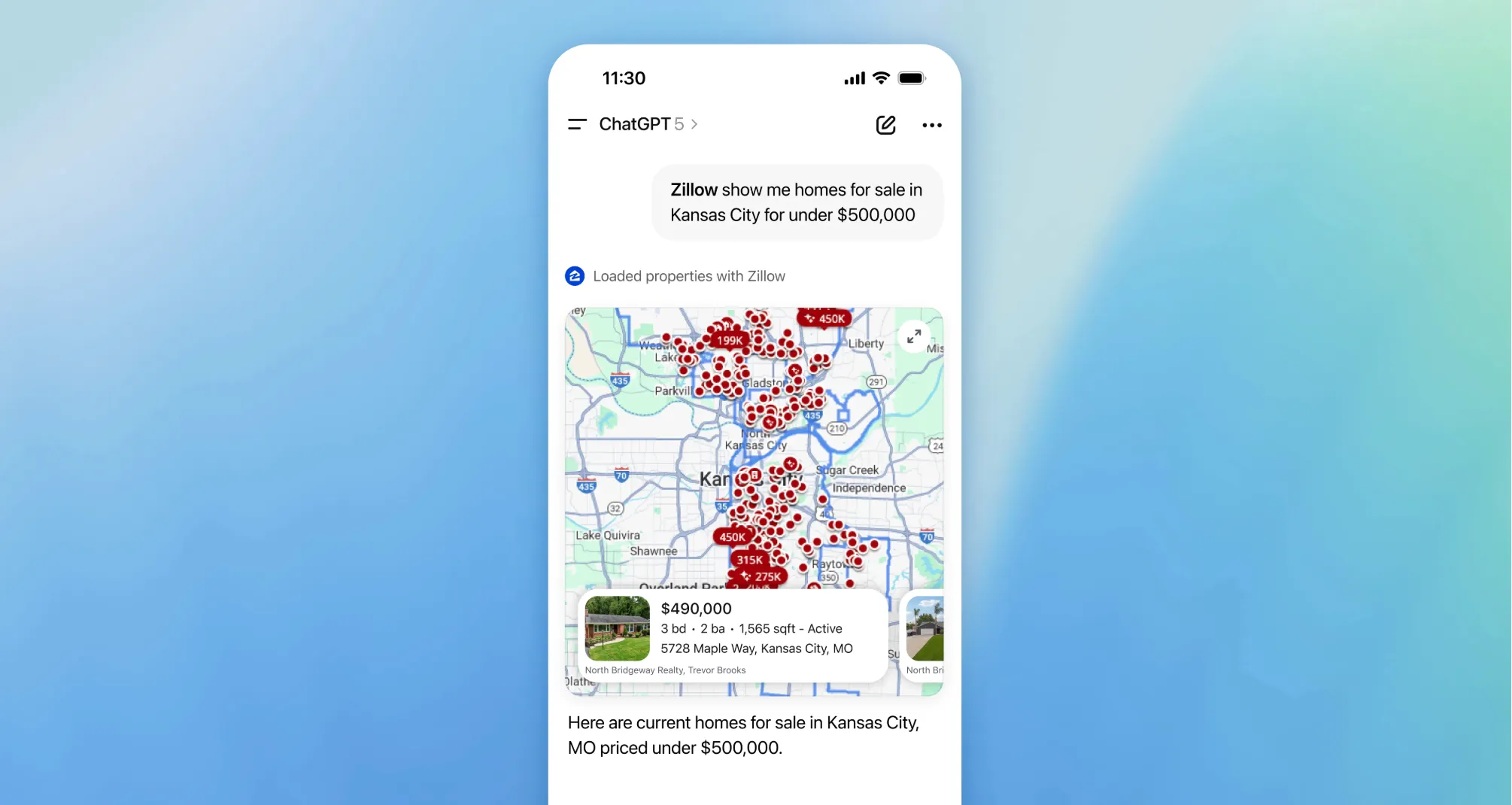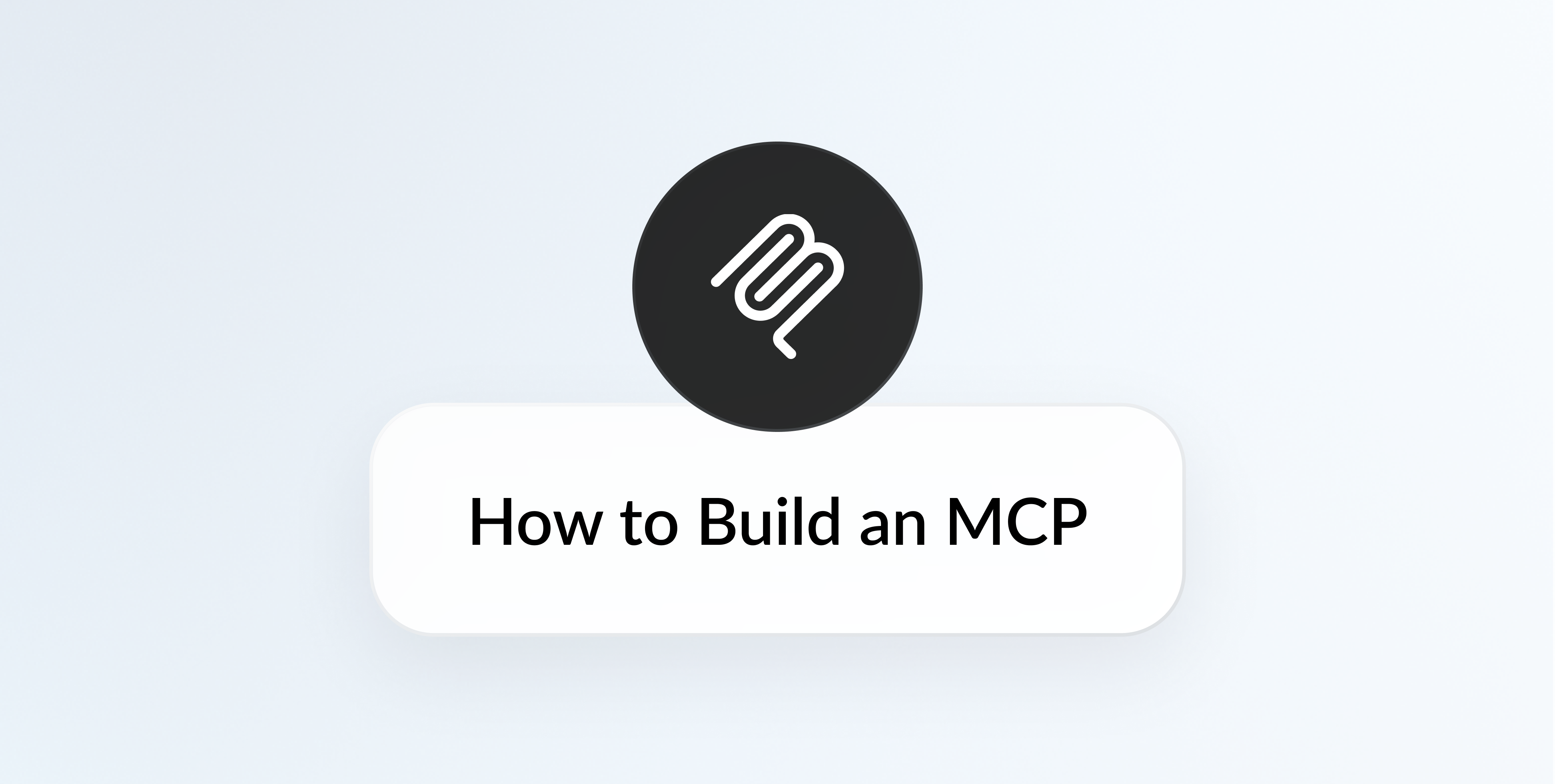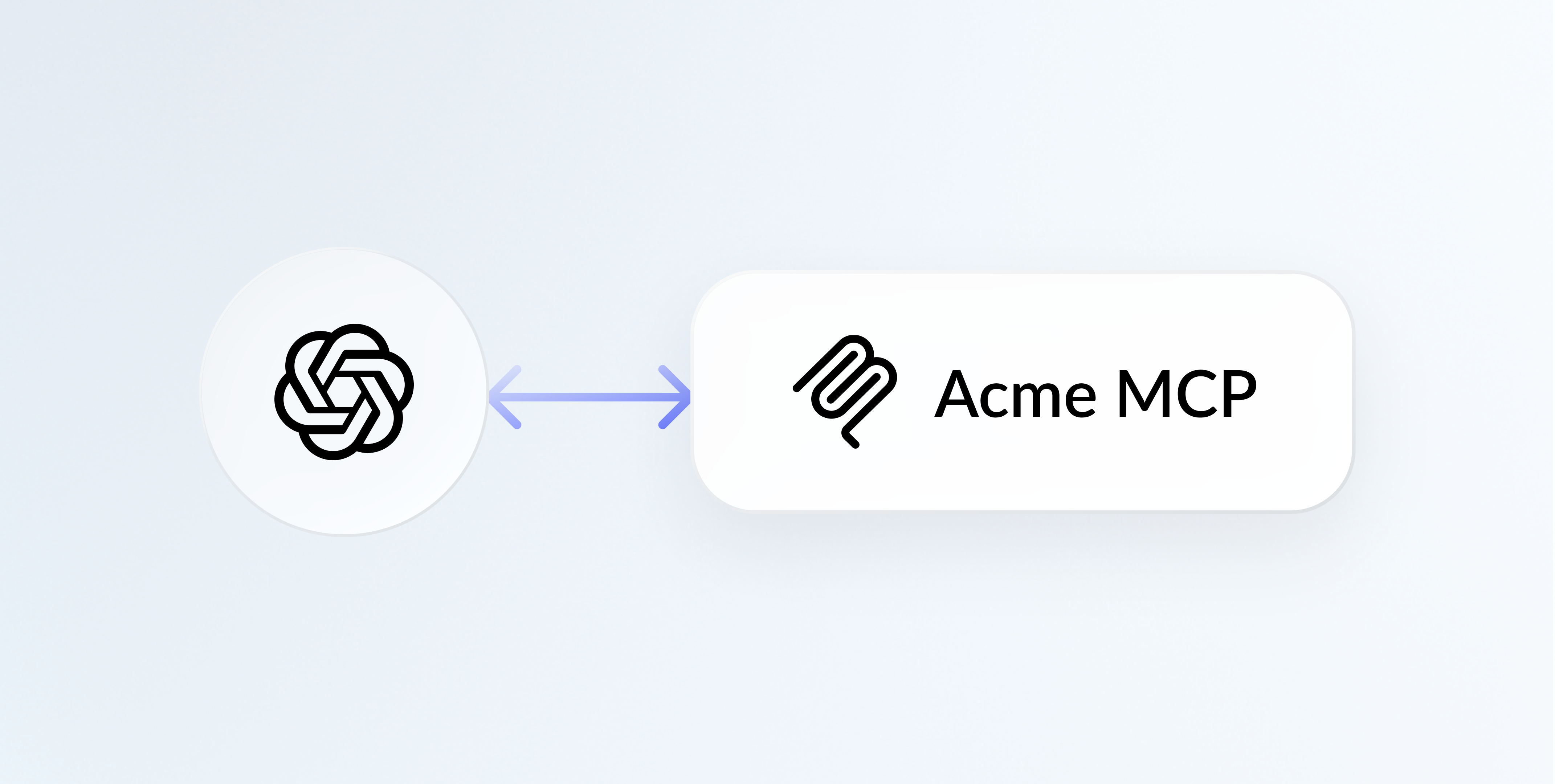Your Product’s New Front Door: Apps in AI Assistants

We’re entering the next UX wave where the primary interface is a conversation—and your product surfaces inside it.
Over the past decade, we’ve witnessed an explosion of SaaS tools—each solving one slice of the workflow. But as the number of apps grew, so did fatigue. Constantly adopting new tools, switching tabs, authenticating, and context-hopping between dashboards has created friction and fragmentation.
“Apps in chat” announced at the OpenAI Dev Day marks the acceleration of a quiet consolidation already underway: a shift toward unifying the user interface into a single conversational space where search, data, apps, work, and services converge.
This doesn’t mean apps disappear—it means tasks are being redistributed. Simple, high-frequency, or data-driven actions will increasingly happen within the conversation, while more immersive or creative flows will still expand out to the full application.
This shift serves two types of users at once:
- Consumers (external): Deliver slices of your product inside the assistant—so users can discover, try, and buy without switching context. Your brand shows up at the moment of intent, with lightweight UI for information, action, confirmation, or even checkout.
- Teams (internal): Make your assistant of choice radically more capable by connecting it to your data sources (warehouses, docs, APIs) and work apps (CRM, SaaS tools). It can now pull live data, generate insights, and trigger actions directly from ChatGPT—while maintaining policy, traceability, and compliance.
This means you can bring part of your app experience into the conversation—so value happens where users already are.
What changed: Apps that live in the conversation
AI assistants are already powerful tools today—but they’re about to become exponentially more capable. Soon, assistants like ChatGPT, Claude, or Mistral will connect to virtually any service or data source, transforming into true operating systems.
The shift is subtle but profound: users will no longer bounce between your website, mobile app, or support bot. Instead, your product will appear inside the assistant—suggested at the right moment, invoked by name, and operated through natural language—while the conversation itself becomes the common thread that enables seamless interoperability between apps.
This wave is already delivering tangible value. Marketing agencies are generating client reports directly from Claude by linking GA4, Ads, and CRM data—cutting reporting time by 70%. Consulting firms are turning proprietary frameworks into MCP servers that clients can access through their own chat tools. Venture firms are connecting Airtable, Gmail, and CRM to automate meeting prep and deliver portfolio insights right from ChatGPT.
And this is only the beginning. Next comes lightweight UI surfaces—cards, lists, and focused full-screen views—that will make these conversational experiences richer and more visual while keeping users even more anchored in the conversational flow.

For today, apps in chat remain limited to select OpenAI design partners (Booking.com, Canva, Coursera, Figma, Expedia, Spotify, and Zillow). But OpenAI has already published clear guidelines they call Apps SDK—built on the Model Context Protocol (MCP)—for developers to integrate their apps. By year’s end, OpenAI plans to start accepting app submissions for review and wider publication.
Why it matters: Big opportunity for new business
New acquisition channel. Assistants route to your app when the model infers intent, your metadata matches the ask, and the user’s context aligns to it. That’s a new, intent-native acquisition channel with massive potential to access a billion plus users.
New business model. By offering slices of your service directly inside the conversation, companies can unlock new ways to monetize. For example, consulting firms can package their proprietary data into an MCP that their clients can install within their own AI assistants—turning a traditionally service-based business into a recurring revenue stream.
New level of interoperability. Today, AI is powerful—but it operates mostly in silos, across disconnected vertical applications. With the conversation as a common thread and MCP enabling the right level of connection between apps and services, we’re entering a new phase of interoperability. Context, data, and actions can now flow seamlessly between systems, creating a unified user experience where everything feels even more connected and in sync. Hopefully marking the end of the copy-paste and manual data entry era.
New class of creators. Soon enough, anyone will be able to mix and match MCP servers—to create new ways of getting things done across apps. This can open the door to a new creator economy, where individuals design and commercialize MCP workflows for others to use, much like creators today sell N8N templates or automation bundles.
How our customers are using MCP today?
Connecting apps to AI assistants is already transforming how businesses operate. Across industries, customers use MCP to surface live insights, automate workflows, and deliver true interoperability directly inside assistants like ChatGPT or Claude.
The big advantage? Adoption happens organically—there’s no new software to install or training to run because these experiences live inside the interfaces people already use every day.
Marketing Agency (Internal)
Connects data from multiple databases to generate reports directly from chat — cutting report time by 70%.
Venture Firm (Internal)
Connected Airtable, Gmail, and CRM through MCP to automate meeting prep and generate dynamic LP reports on the fly.
Enterprise Engineering Team (Internal)
Converted internal APIs and databases into MCPs, enabling developers to access systems directly from their IDEs - saving massive dev time and eliminating context switching.
Airlines (External)
Created an internal reservation MCP so employees and premium customers can book and manage flights directly from chat.
Data Company (External)
Built an MCP that lets their customers query live company data directly from their own AI assistants.
Consulting Firm (External)
Built a domain-specific MCP on proprietary marketing data, turning their expertise into an AI agent their clients can access inside their own assistants.
Getting started today
Want to make your business accessible to AI Assistants?




.jpg)



